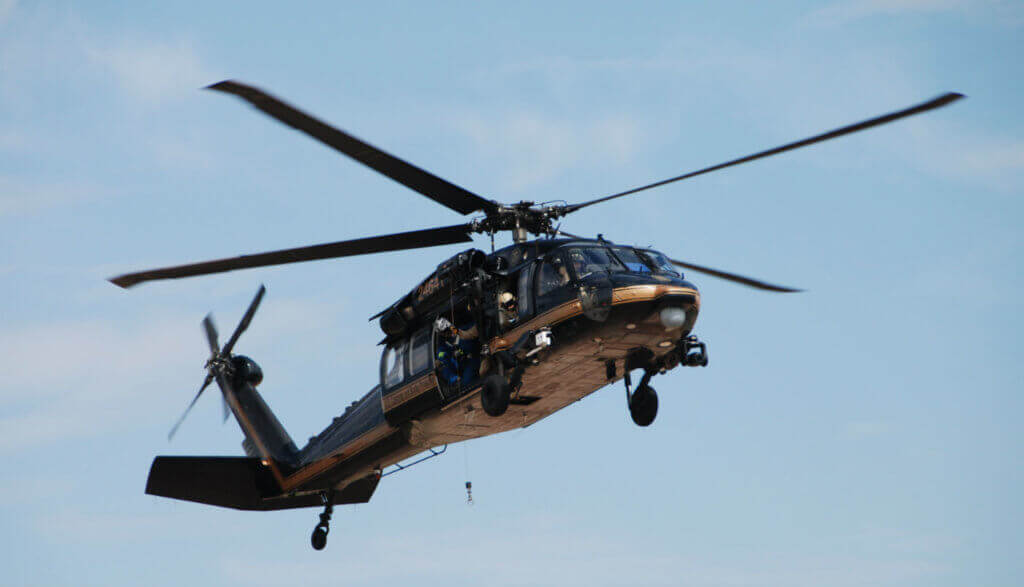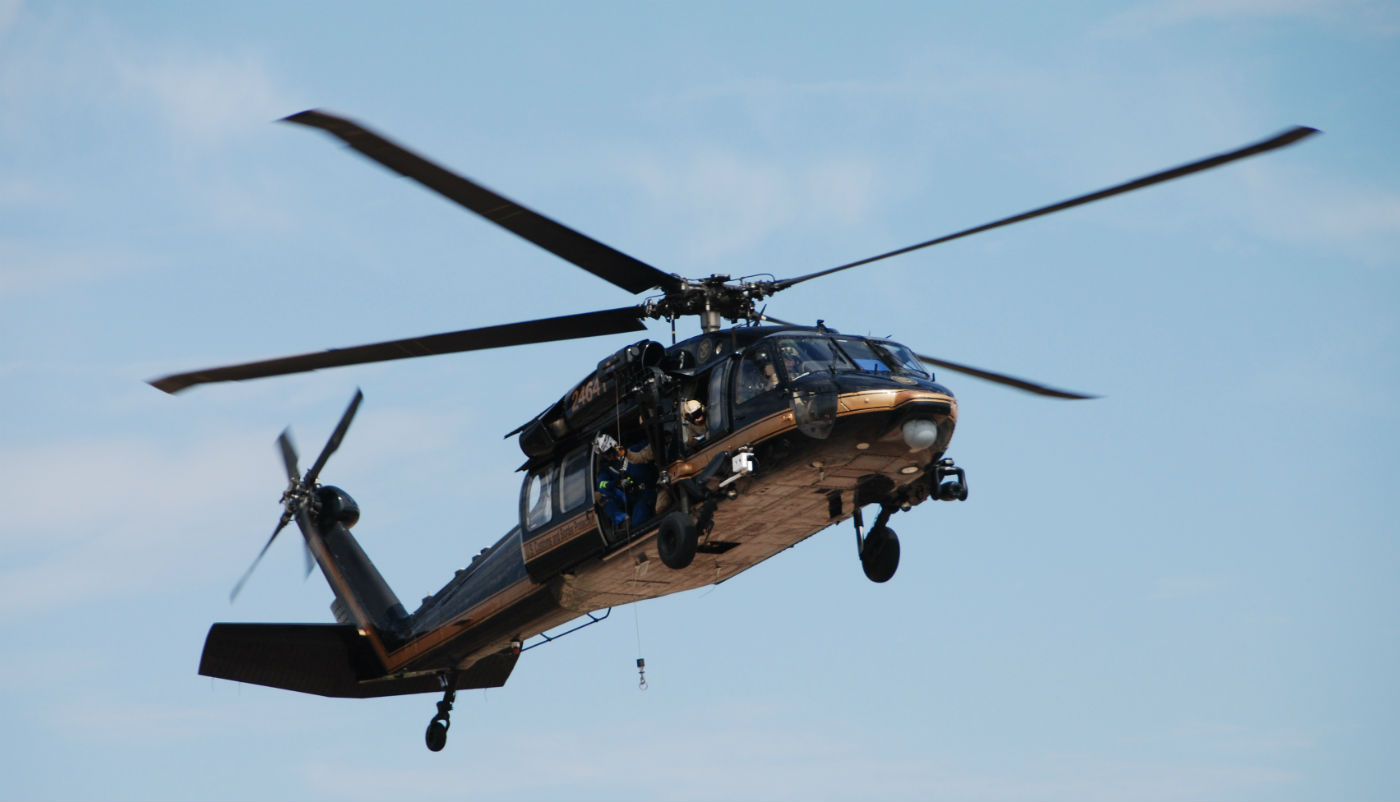Priority 1 Air Rescue (P1AR) was selected by U.S. Customs and Border Protection (CBP), Air and Marine Operations (AMO) to deliver advanced search-and-rescue (SAR) hoist rescue training. The training program included UH-60 pilots, hoist system operators, and rescue specialists.

AMO operates multiple UH-60s throughout the country, many of which perform a wide variety of multi-mission taskings, including lifesaving civilian SAR missions.
The initial phase of the training was conducted at the P1AR Search and Rescue Tactical Training Academy (SART/TAC) located in Mesa, Arizona. P1AR delivers comprehensive and effective training by integrating new synthetic technology into its proven training courses in order to provide the most effective, affordable, and safest mission training possible.
The synthetic trainers allow AMO personnel to participate in a ‘crawl, walk, run’ paced course by completing virtual hoist simulator (VHS) and hoist procedural tower (HPT) training prior to performing the actual hoist live flight component in both day and night/night vision goggle (NVG) environments. After the AMO course participants completed the initial SART/TAC phase, P1AR advanced SAR instructors travelled to AMO’s Tucson Air Branch to conduct both day and night (unaided and NVG) live flight hoisting, which culminated in advanced SAR mission scenario based training.
“We are honored to have been selected by U.S. Customs and Border Protection, one of the largest and most capable border services in world,” said Patrick Dennis, senior vice president of P1AR. “The advanced level of training successfully completed by CBP is a testament to its extremely high level of professionalism and dedication provided by everyone involved on the team. This further demonstrates the ever increasing focus and importance for our law enforcement services to not only protect the public, but also perform lifesaving search-and-rescue missions when needed. We look forward to continuing our strong relationship with CBP in the future as we believe it will prove a highly capable and indispensable lifesaving program serving the public.”
AMO selected P1AR due to its vast range of SAR/tactical training experience, and relevant proof of performance training with UH-60 helicopters, synthetic training devices, and P1AR’s ability to provide internationally recognized and compliant HEC programs. Each training curriculum provided to AMO met and exceeded the Federal Aviation Administration (FAA) FAR Part 133 Class D requirements for human external cargo (HEC).
The advanced SAR hoist rescue training courses will further enhance an already highly capable service, while providing program standardization for AMO pilots, hoist system operators and rescue specialists.
P1AR courses are available for numerous aircraft and mission types, and are delivered by experienced and dedicated advanced SAR instructors. Basic to advanced mission SAR training may be delivered at the customer’s location where they receive the necessary ground school and flight instruction on their helicopter for training evolutions.
Alternatively, customers have the option to conduct their initial phase of training at the P1AR Search & Rescue Tactical Training Academy. This facility provides course participants a higher level of learning utilizing the multi configurable helicopter hoist procedural tower and virtual hoist simulator. By removing the live flight component during the initial basic phase of training, customers can significantly increase the safety and effectiveness of their mission training, while substantially reducing the associated helicopter flight time expenses.









